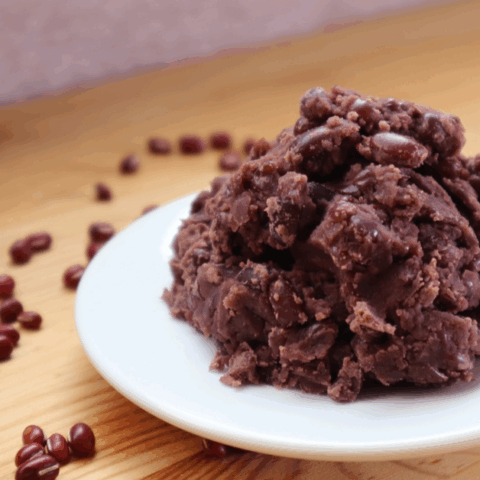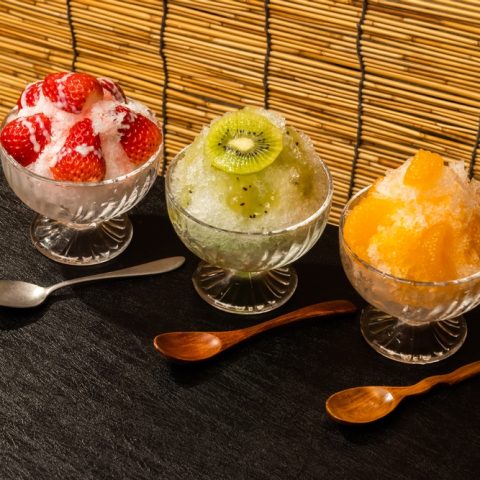
There are three golden rules that you absolutely must follow when visiting a foreign country:
- Respect the culture of the land that welcomes you.
- Visit as many spots as possible.
- Try as much local food as your stomach can hold (perhaps even beyond that)!
Today, you are in luck because we will solely focus on the third one. To be more precise, let’s enter the delicious, sweet world of fluffiness! Like a cloud, it will melt into your mouth and liberate all the savors of its content. Welcome to the enchanting world of Dorayaki.
What is a Dorayaki?
Now, if you are familiar with Japan, perhaps you have heard about this sweet dessert. Maybe, somewhere in your subconscious mind, the term seems familiar. Or on the contrary, you may be completely clueless as to what it is. Whichever may be the case, allow me to (re)introduce you to the flavor-packed dorayaki.
Dorayaki is a traditional wagashi (Japanese sweet), which consists of two pancake-like, round, fluffy pieces of bread, containing a paste made out of red Azuki beans, called Anko. The bread is similar to castella sponge, and the batter is made with honey, and sometimes mirin. Unlike its cousin, the Taiyaki, this sweet is soft, with a light touch of sweetness.

Daifuku Dorayaki – Photo Credit: KOHUKU
Traditionally, the filling is composed of Anko, so that’s usually the image you have when you picture it. However, nowadays, people have started experimenting with our greatest delight and offer you a large variety of creative fillings. These days you can find dorayaki containing chocolate, lemon cream, even Daifuku, and so many more.

Plenty of Dorayaki being cooked – Photo Credit: wisely
A Little Bit of Historical Context
Before we even begin to describe the rich flavor, let me enlighten you about this wagashi’s origins. As fascinating as its texture is, its history is also quite interesting. Originally, during the Edo era, dorayaki was solely composed of a single layer. The sandwich version that we all know and love today was created not so long ago, in the 20th century. To be more precise, the latter version was invented in 1914 by Usagiya, in Ueno, Tokyo. I also have the pleasure to announce to you that, to this day, the shop still exists!

Round Dorayaki seen from above – Photo Credit: koosen
The Myth Behind the Pastry
There are many theories behind the creation of Japan’s favorite snack. There are primarily two that are believed to be the most likely. The first story revolves around a legendary warrior named Saitō Musashibō Benkei. One day, after getting injured, the samurai was taken in by an elderly couple who nursed him back to health. To nourish the wounded warrior, the couple offers him a small, round-shaped cake cooked on a gong (a circular-shaped musical instrument). The cake is what we know today as a dorayaki.
Another legend depicts the following story: After taking refuge in the barn of a farmer, Benkei leaves the place but forgets to retrieve his gong. The farmer then uses the gong as a way to fry his pancakes. Thus, the dessert was born. It is interesting to note that Dora is the Japanese word for gong, and Yaki means cooked on direct heat. So it’s most likely that our sweet snack got its name from its similarity in shape with the musical instrument.

Dorayaki, also known as Mikasa in the Kansai region – Photo Credit: Benny-K
Kansai Variant
The name dorayaki is famous all around the world, but did you know that the Kansai region has its own variant called Mikasa? The name most probably derives from one of two possibilities. Depending, of course, on the choice of the Kanji, one of the meanings of Mikasa is “three bamboo hats.” The other alternative would be that it refers to Mount Wakakusa, also known as Mount Mikasa. In Nara, you can even find some that are up to 30 cm in diameter!

Dorayaki filled with Anko paste – Photo Credit: Ladanifer
Dorayaki Brings You Luck
Not only will this pastry have you licking your lips, but did you know that it also brings you luck? A perfect two-in-one combo! There are two reasons why they are said to bring you good fortune. The first is because of its shape: if you look at it closely, it looks like the two pieces of bread are hugging each other, sharing and squeezing the Anko tightly, just like a couple would embrace one another, or how parents would hold their children. It is said that if a groom-to-be brings one as a souvenir during his first visit to his soon-to-be wife’s house, then the couple will lead a happy life. The second reason is that Azuki beans are believed to ward off misfortune, due to their red color and shape. Azuki has long been incorporated into Buddhist and Shinto celebrations for this reason, among others.

Delicious Dorayaki awaiting you – Photo Credit: Ladanifer
Best Places to Eat Dorayaki
Now for the best part: a list of all the best places to get your fix. Here we go!
In Tokyo:
Tokyo has a lot of wonderful wagashi shops where they sell tasty dorayaki, so much so that sometimes, you can easily get overwhelmed and get confused about where to spend your time and money. Well, if you want my honest opinion, you should definitely join our Sugamo tour to try the best dorayaki in town! You’ll not only get to try the best of the best, but you won’t even have to do any homework, as we will take you to the best shop you have yet to discover!
Once you’ve tried our tour, why not try these other shops too? After all, one of the reasons this treat is special is because its taste totally depends on its maker. A unique sweet for a unique customer!

Chocolate Dorayaki – Photo Credit: jreika
Kashi Kobo Fukudora: The main selling point of this shop is that it offers you 14 different kinds of Dorayaki, all with their own unique flavor! Basically, it’s the ultimate heaven for a fanatic! They are open from 9:00 to 19:00, except on Sundays when it closes at 18:00. For more information, please visit their website.
Kitera: Not only do they sell traditional Dorayaki (210 yen), but their specialty is that they also sell unstuffed versions (110 yen) so that YOU can fill them up with whatever ingredients your heart desires. They also sell a special Zunda (Edamame) Anko variety(only on Wednesday and Thursday) for the price of 240 yen and an Ume (Plum) for 230 yen (Monday and Tuesday only). They are open from 10:00 to 18:00 on weekdays and Saturdays from 10:00 to 17:00. They are closed on Sundays. Please visit their website for more details.

Usagiya shop in Nihonbashi – Photo Credit: Ned Snowman
Usagiya: reviewed on TripAdvisor as “The best dorayaki in town,” there is always a line in front of this store, so be sure to come in advance. And yes, this is the shop mentioned earlier that’s believed to have invented this incredible dessert. Aside from our tasty focus for today (240 yen), they also sell Usagi (Rabbit) Manju and Kisaku Naka Todorayaki. Their hours are from 9:00 to 18:00, and they are only closed on Wednesdays. They have a shop in Ueno and two stores in Nihonbashi (here and here). For more information, please visit their website.
Jiman Kusamochi: Almost as highly ranked as Usagiya, the unique draw of this shop is that they sell a variety with a sweet chestnut paste filling (250 yen). A must-try! They are open from 9:00 to 16:00 and are closed on Wednesdays. For more information, please visit their website.
Suzume-ya: They sell traditional the classic Anko paste, as well as another Japanese sweet called Monaka. A single dorayaki costs 250 yen, while a box of six costs 1500 yen, and a box of ten will run you 2500 yen. They are open from 10:00 or until the items are sold out from Thursday to Saturday. Please visit their website for more details.

Chestnut Dorayaki – Photo Credit: umaruchan4678
In Chiba:
Nagomi-Yoneya: This shop is a long-established Japanese confectionary shop that not only sells the traditional Anko paste but also Kuri (chestnut)! They are open from 9:00 to 21:00. For more information, please visit their website.
In Shizuoka:
Beniya: At this shop, you have four types – Teyaki (chunky red bean paste – this one is baked); Matcha (cakes are made out of matcha and filled with Anko & steamed); Green Tea (similar to the Matcha one, but baked) and Sakura (filled with pickled cherry leaves and a white bean paste & it is steamed). They also have a seasonal menu and two types of cold ones: Fresh cream and Kyuemon (buttercream and smooth sweet bean paste). They are open from 8:30 to 18:00 and are closed on Wednesdays. Please visit their website for more details.

Dorayaki with Doraemon’s face on it – Photo Credit: enchanted_fairy
Doraemon’s Favorite Food!
Dorayaki is a sweet that you must try when in Japan, it would almost be disrespectful to leave the Land of the Rising Sun without putting this soft, fluffy sandwich into your mouth! Don’t believe me? You’ve got to take a bite of this delicacy and see why Doraemon became so obsessed with this wagashi that he is always willing to get into trouble just for a taste of it for yourself.
Not a fan of Anko? No worries, Dorayaki has you covered. A myriad of other fillings await your stomach. So, what are you waiting for? Go get yourself one!
Come try one of the best Dorayaki in Tokyo on our Super Sugamo Local Foodie Adventure!
Featured Photo: 54613



